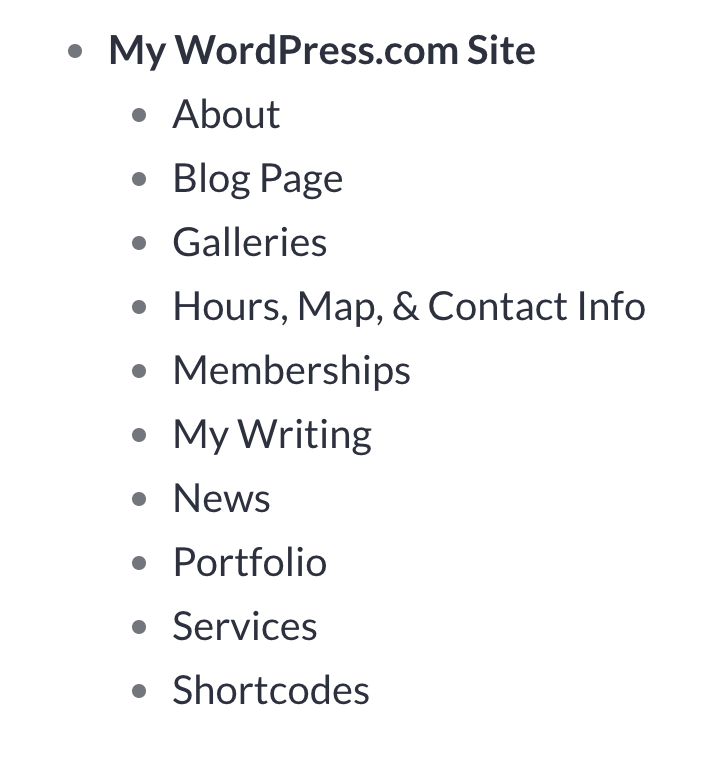A sitemap (or site map) is a file that lists every URL on your website that should be indexed by search engines like Google. WordPress.com automatically generates an XML sitemap for you.
In this guide
A quick way to access your sitemap is to add /sitemap.xml to the end of your website’s address. For example, yourgroovydomain.com/sitemap.xml or yourgroovysite.wordpress.com/sitemap.xml.
You can also follow these steps to locate your sitemap:
- Visit your site’s dashboard.
- Navigate to Tools → Marketing (or, Jetpack → Settings if using WP-Admin).
- Select the Traffic tab at the top.
- Scroll down to the Sitemaps section:

The first URL is the standard sitemap most typically used to allow search engines to list your site. We also provide a News Sitemap.
💡
Missing the sitemap that is included with all WordPress.com sites? It’s likely you have a self-hosted WordPress.org site — you can install the free Jetpack plugin to access the settings described in this guide.
As long as your site’s Privacy Settings are set to public, and the option to “Discourage search engines from indexing this site” is not checked, search engines will automatically find your sitemap and use it to index your site. WordPress.com automatically sends the update to search engines whenever you update or delete a page or post.
The number of posts in your sitemap is limited to 1,000 recently updated posts.
News Sitemaps are similar to the standard sitemaps for search engines but specific to Google News — a news aggregator service developed by Google. News sitemaps include posts published in the last 48 hours.
For a site to be featured on Google News, it must be pre-approved by Google. Once approved, news-based websites can submit the news sitemap to Google News.
The [sitemap] shortcode will display a list of all your site’s pages in a hierarchical bulleted list, following any parent/child relationships set in Page Attributes. It will look something like this, but with your own pages, and the styling will depend on your theme:

Display this list on any page of your site by inserting a Shortcode block and typing the [sitemap] shortcode.
